The Meadowlarks comprise a group of seven species of songbirds in the Icteridae family. Some of their closest relatives are grackles, orioles, blackbirds, cowbirds, and more. Researchers divide the seven species into two groups, or taxonomic genuses: the Leistes, or red-breasted, and the Sturnella, or yellow-breasted. Read on to learn about the Meadowlark.
Description of the Meadowlark
This group varies in its plumage color, but is mostly similar in size and shape. Members of Leistes all have red colored feathers on their chests, and solid black plumage across the rest of their bodies.
Conversely, the 2 members of Sturnella have yellow feathers on their chests, and mottled cream and brown plumage on the rest of their bodies. Most Meadowlarks measure between 8 and 10 inches long, and weigh between 3 and 5 ounces.
Interesting Facts About the Meadowlark
There are several different species of Meadowlark, and each is unique in its own right. We highlight several individual species below, as well as a single fun fact about them all.
- Meadowlarks – A Misnomer – Despite their name, Meadowlarks are not closely related to larks at all. As discussed above, these birds are members of the Icteridae family, while “true” larks are in the Alaudidae family.
- Eastern Meadowlark – This widespread species lives across the eastern United States and parts of Mexico and Central America. Researchers divide this species into 17 different subspecies based on the region, and even believe that one subspecies, Lillian’s Meadowlark, might be a separate species entirely.
- Western Meadowlark – Despite their name, the range of this species also overlaps into parts of the eastern United States. Thus, they overlap with Eastern Meadowlark populations, but do not interbreed frequently. In fact, research has shown that hybrid Eastern/Western Meadowlarks do not lay as many eggs as their purebred counterparts.
- Long-Tailed Meadowlarks – Part of the red-breasted group, this species has striking red feathers on its chest, and a line of white “eyebrows” behind each eye. The rest of the body is black, contrasting their “eyebrow” feathers dramatically.
Habitat of the Meadowlark
Each species of these birds has different specific habitat preferences. Some of the different ecosystems that they live in include grasslands, prairies, steppe, and other open areas.
Their favorite habitats have bushes, shrubs, and solitary trees spread throughout for perching. Many species also inhabit more human-disturbed habitats, like pastures, farms, and even airports!
Distribution of the Meadowlark
The various species have different ranges and distributions. The Red-breasted Meadowlarks live throughout South America, while the Yellow-breasted inhabit North America.
The two North American species range from southern Canada through the United States and Mexico into Central America. The various Red-breasted Meadowlarks live throughout different regions of South America.
Diet of the Meadowlark
Meadowlarks are omnivores, though their primary source of food is insects and invertebrates. They eat a wide variety, and their exact diet varies based on the birds’ species and where they live.
Some of their favorite meals include worms, insect larvae, caterpillars, crickets, spiders, grasshoppers, and more. They also forage for seeds, berries, fruits, and other grains. While hunting, they use their beaks to move aside vegetation and dig about in the dirt or sand.
Meadowlark and Human Interaction
Sadly, human interaction is usually detrimental to these birds. Many different species have declining populations, and several species are vulnerable to extinction in some way. Habitat destruction is the primary threat to most species.
Even though they live in farms and large pastures, farming is currently causing population decline in many species. Pesticides, agricultural machinery, and livestock all contribute to this decline.
Domestication
Humans have not domesticated Meadowlarks in any way.
Does the Meadowlark Make a Good Pet
No, these birds do not make good pets. Even though they are pretty little birds, Meadowlarks are wild animals and the Migratory Bird Treaty Act protects them from capture or harm.
Meadowlark Care
In zoos, these birds live like any other songbird. Most enclosures are quite large, and usually aviary-style with a variety of plants and shrubbery. Aviaries are large enough to host several different species of birds peacefully.
Zookeepers feed them a wide variety of insects, including crickets, insect larvae, mealworms, and pelleted insectivore feed. Each species requires slightly different care, and the populations in zoos vary from species to species.
Behavior of the Meadowlark
Meadowlarks are diurnal birds, and spend most of their day foraging for food or patrolling their territory. Most of their foraging occurs on the ground, where they shift leaves and dirt in search of invertebrates.
They sing to display the boundaries of their territory and fend off intruders, sometimes from the ground, sometimes from a tree, shrub, or fence post. Males establish territories, but sing only as the breeding season arrives to attract a mate and fend off other males. They maintain these territories outside of the breeding season, but with less furor.
Reproduction of the Meadowlark
While the males sing and display their prime territories, the females shop around. Once a female finds a suitable male, she chooses her mate and the pair remain together for the season.
Most Meadowlarks build their nests on the ground. Some nests are elaborate, while others are simple cups. Females usually lay between three and five eggs per clutch. It takes around two weeks for the eggs to hatch, and less than two weeks for the chicks to begin learning to fly.

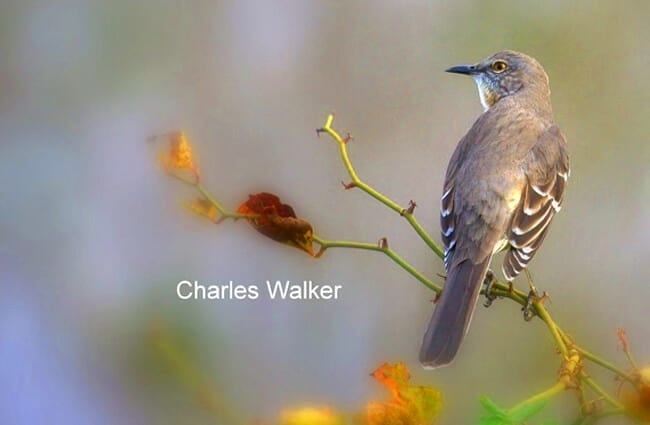
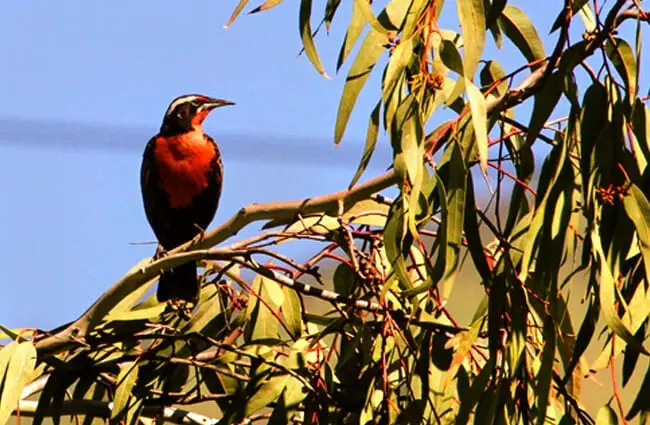
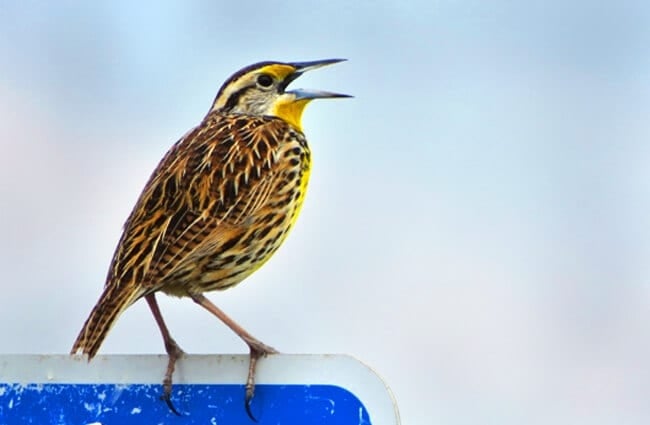

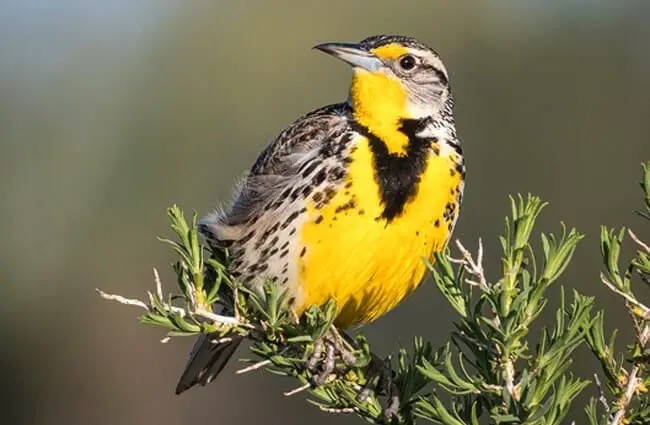
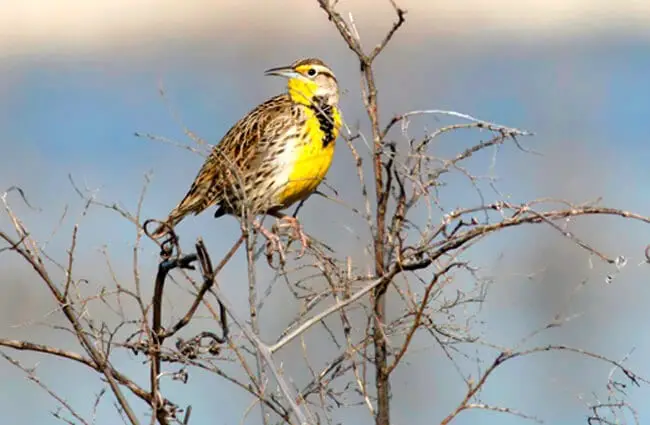

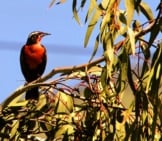
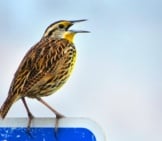
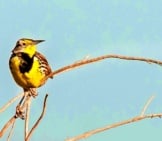
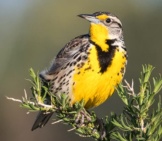
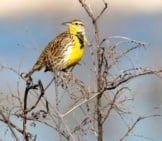
![Red Angus Closeup of a beautiful Red Angus cowPhoto by: U.S. Department of Agriculture [pubic domain]https://creativecommons.org/licenses/by/2.0/](https://animals.net/wp-content/uploads/2020/03/Red-Angus-4-238x178.jpg)












![Red Angus Closeup of a beautiful Red Angus cowPhoto by: U.S. Department of Agriculture [pubic domain]https://creativecommons.org/licenses/by/2.0/](https://animals.net/wp-content/uploads/2020/03/Red-Angus-4-100x75.jpg)

